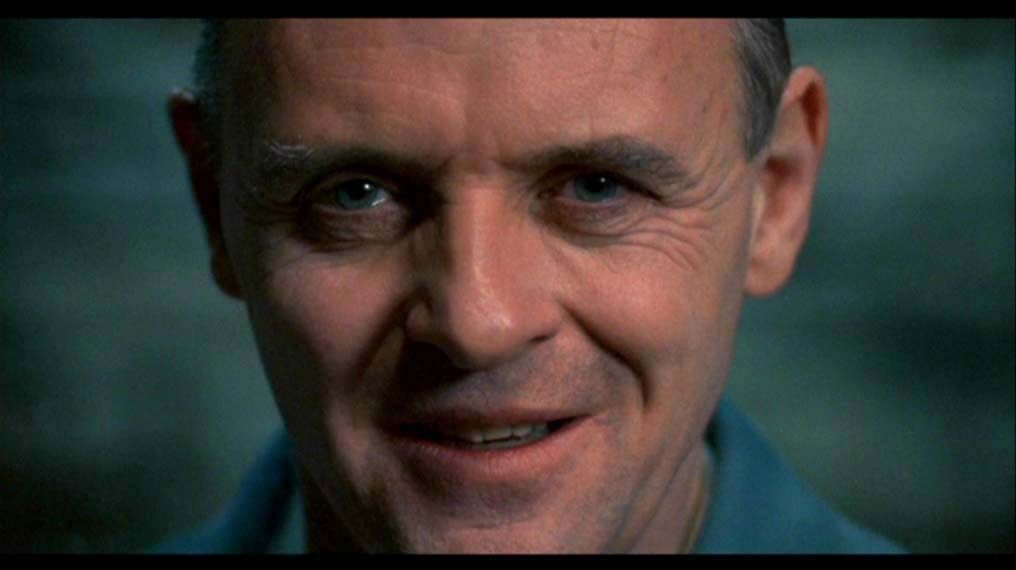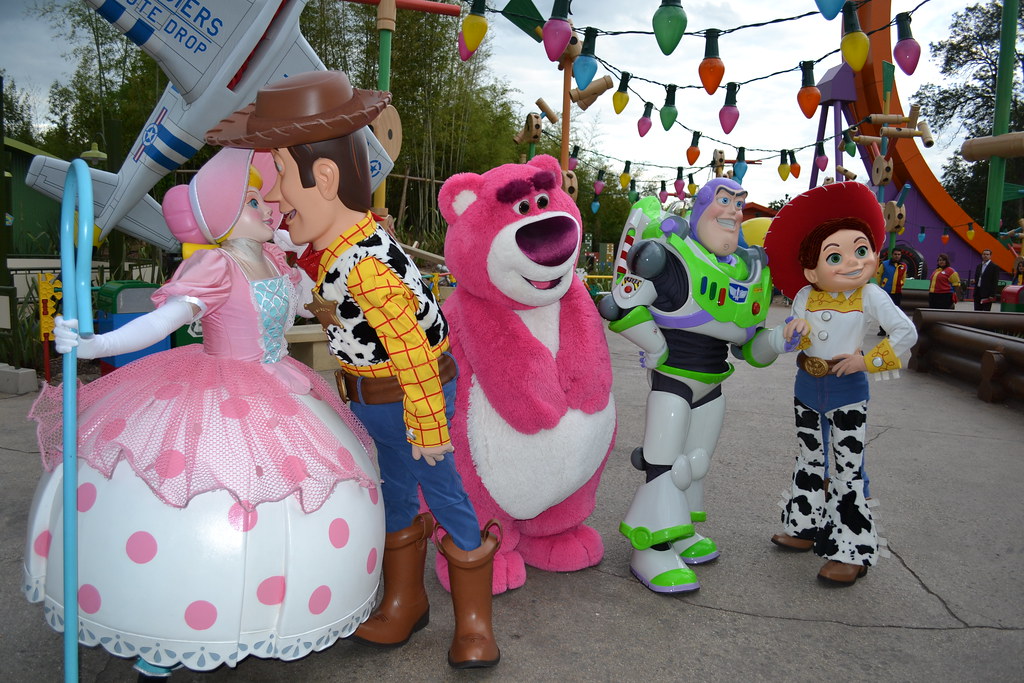
Pixar Animation Studios stands today as a titan in the realm of computer-animated feature films, celebrated globally for its unparalleled blend of technological prowess and heartfelt storytelling. Since its inception, the studio has consistently pushed the boundaries of what is possible in animation, creating a legacy that resonates with audiences of all ages and earning a staggering array of accolades, including 23 Academy Awards and over $15 billion at the worldwide box office. Its journey, however, is far from a simple narrative of success; it is a complex tapestry woven with threads of innovation, audacious business decisions, and a relentless pursuit of creative excellence.
This enduring success is rooted in a fascinating history, starting from ambitious academic experiments and evolving through critical financial gambles and pivotal strategic partnerships. The studio’s trajectory showcases how a commitment to groundbreaking technology, combined with a unique approach to fostering creative talent, can transform an industry. From its earliest days as a pioneering computer graphics group to its emergence as an independent powerhouse, Pixar’s story is a masterclass in adapting, innovating, and continuously redefining artistic and technical benchmarks.
We embark on an in-depth exploration of Pixar’s formative years, delving into the foundational technological breakthroughs, the strategic business maneuvers that shaped its independence, and the visionary creative processes that laid the groundwork for its revolutionary impact on cinema. This comprehensive analysis reveals the intricate steps and crucial decisions that propelled Pixar from a nascent computer division into the animation giant we know today, setting the stage for decades of animated storytelling that would captivate the world.
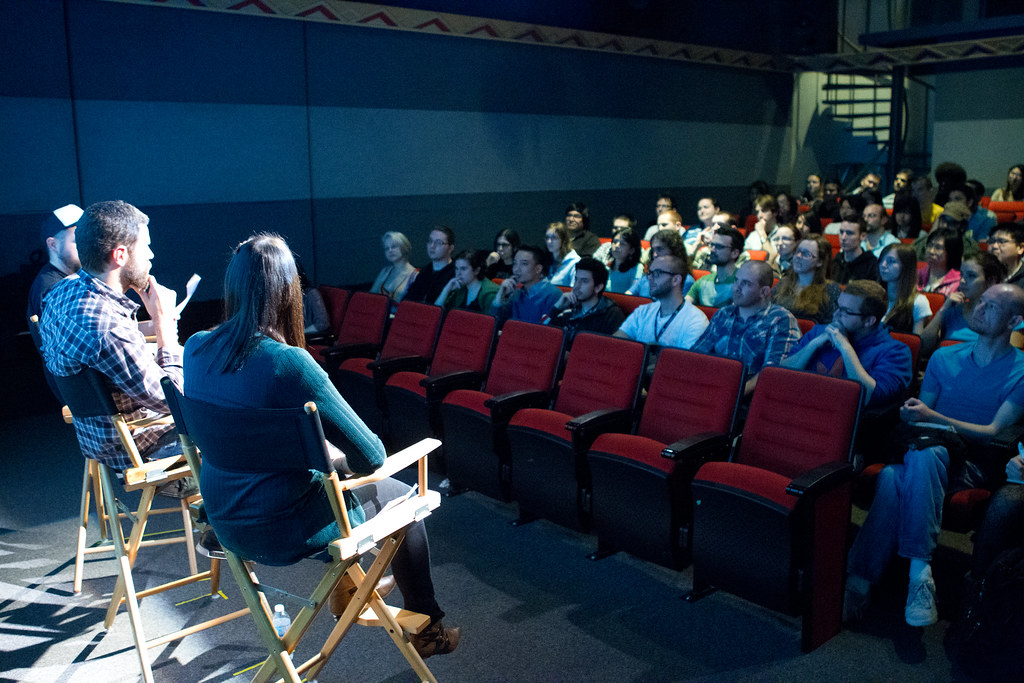
1. **The Genesis: From NYIT’s CGL to Lucasfilm’s Graphics Group**The story of Pixar fundamentally begins not in a film studio, but in the academic halls of the New York Institute of Technology (NYIT) in 1974. There, founder Alexander Schure, who also owned a traditional animation studio, established the Computer Graphics Lab (CGL) with an ambitious vision: to create the world’s first computer-animated film. This bold objective drew in a cohort of brilliant computer scientists, laying the groundwork for what would become a revolution in visual storytelling.
Edwin Catmull and Malcolm Blanchard were among the first to join this pioneering group, soon followed by Alvy Ray Smith and David DiFrancesco. These four individuals constituted the original core of the Computer Graphics Lab, which was housed in a converted two-story garage acquired from the former Vanderbilt-Whitney estate. Schure’s initial investment in the lab was substantial, approximately $15 million, providing the necessary resources for early experimentation, though it also contributed to NYIT’s financial strains.
Despite the significant resources, the team eventually recognized that achieving their monumental goal required the environment of a real film studio. This realization paved the way for a crucial connection when Francis Ford Coppola invited Smith to a three-day media conference. There, Coppola and George Lucas articulated their compelling visions for the future of digital moviemaking, a discourse that profoundly resonated with Smith and his colleagues.
This convergence of ambition and opportunity led to a pivotal offer from George Lucas. Six employees from CGL gradually resigned, strategically finding temporary jobs for about a year to avoid raising suspicion with Schure, before finally joining the Graphics Group at Lucasfilm. Catmull was hired in 1979 to head this newly formed Computer Division, where he was reunited with Smith, who became its director. At NYIT, these researchers had already pioneered numerous foundational CG techniques, most notably the invention of the alpha channel by Catmull and Smith themselves. At Lucasfilm, the team continued their groundbreaking work, developing the precursor to RenderMan, known as REYES, and creating critical technologies like particle effects and various animation tools.

2. **The Birth of Pixar: Steve Jobs’s Investment and the Pixar Image Computer**Amidst these technological advancements within Lucasfilm’s Computer Division, a new name began to take shape for a groundbreaking digital compositing computer. Initially suggested as the “Picture Maker,” Alvy Ray Smith proposed a more concise and memorable alternative: “Pixer.” After a subsequent meeting, this was refined to “Pixar,” a name that would soon become synonymous with innovation. The precise origin of the name remains a topic of anecdote, with author Michael Rubin noting that when interviewing four employees involved, he received four distinct versions of the story from a restaurant visit in 1981.
By 1982, the Pixar team, still operating within Lucasfilm, had begun contributing to special-effects film sequences, notably the iconic Genesis Effect in “Star Trek II: The Wrath of Khan” and the Stained Glass Knight in “Young Sherlock Holmes.” However, the financial landscape shifted dramatically. George Lucas’s 1983 divorce, coupled with a sudden decline in revenues from Star Wars licenses after the release of “Return of the Jedi,” signaled that he would likely sell the entire Graphics Group. Catmull and Smith, concerned that the talent would scatter and their dream of a computer-animated film would vanish, concluded that forming an independent company was the only way to keep the team intact.
This led to the spin-off of the Graphics Group as an independent corporation in February 1986, led by Catmull and Smith, comprising 38 employees. Among them were original NYIT members like Malcolm Blanchard, David DiFrancesco, Ralph Guggenheim, and Bill Reeves, with Tom Duff joining later. Recognizing that sufficient computing power for their ultimate film goal was still years away, they decided to operate as a hardware company in the interim. Their core product became the Pixar Image Computer, a system primarily marketed to governmental, scientific, and medical sectors, complementing their use of SGI computers.
The independent Pixar then found its crucial benefactor in Steve Jobs. Having been edged out of Apple in 1985 and now founder and CEO of NeXT, Jobs was approached by Lucas after initial offers were deemed too low. On February 3, 1986, Jobs invested $5 million of his own money to acquire the technology rights from George Lucas and an additional $5 million as capital into the new company, joining the board of directors as its chairman. This substantial investment marked the true birth of Pixar as an independent entity, despite earlier attempts like the shelved computer-animated movie “Monkey” with Japanese publisher Shogakukan, which was deemed technologically infeasible and too costly at the time, reinforcing the focus on hardware until Moore’s Law could catch up.
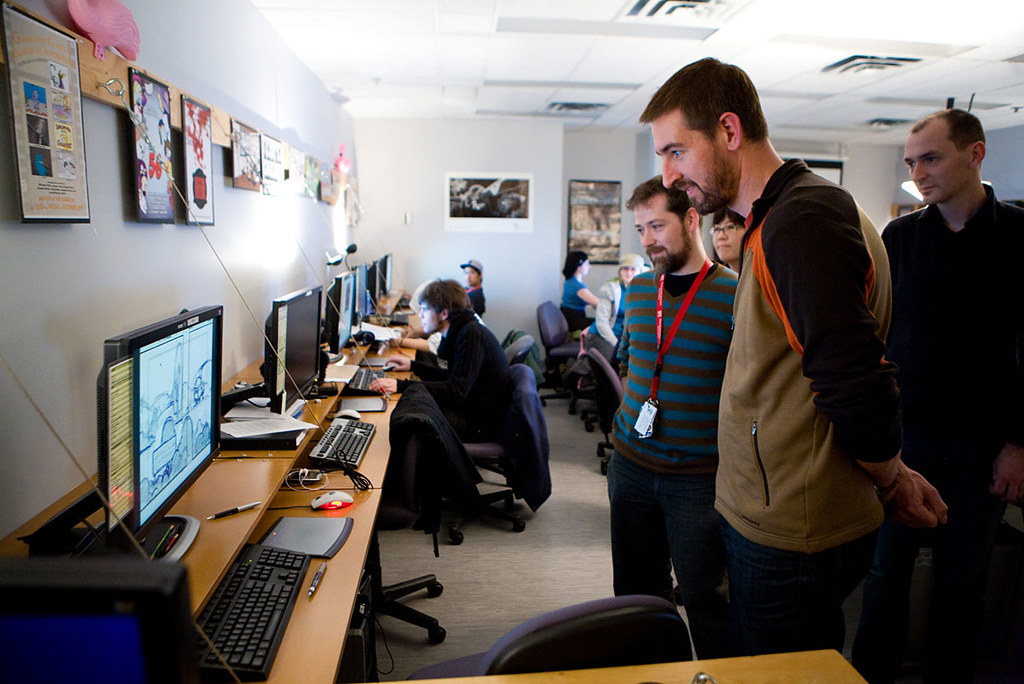
3. **Pioneering Computer Animation: Early Shorts and Technological Milestones**While Pixar’s initial business model focused on hardware sales, the studio’s heart and soul remained deeply rooted in animation. John Lasseter, who had initially been hired for a week in late 1983 as an “interface designer” at Lucasfilm, played a pivotal role in these early creative endeavors. His animation of the short film “The Adventures of André & Wally B.” showcased the nascent potential of computer graphics and hinted at the storytelling magic to come. These early projects, though short, were crucial demonstrations of the technology’s capabilities.
To further drive sales of the Pixar Image Computer and increase the company’s capital, Steve Jobs championed the idea of releasing the product to the mainstream market. It was in this context that Lasseter’s non-for-profit short demonstration animations became invaluable. His seminal work, “Luxo Jr.” (1986), created specifically to exhibit the device’s groundbreaking capabilities, premiered to immense fanfare at SIGGRAPH, the computer graphics industry’s largest convention. This iconic short, featuring a pair of anthropomorphic desk lamps, not only captivated the industry but also became the studio’s beloved mascot, embodying Pixar’s blend of technological innovation and charming character animation.
Concurrently, Pixar forged a crucial relationship with Walt Disney Studios, a partnership that would profoundly shape its future. In May 1986, Pixar signed a contract with Disney. Disney subsequently purchased and utilized the Pixar Image Computer along with custom software developed by Pixar, integrating them into its Computer Animation Production System (CAPS) project. The primary objective of CAPS was to automate the labor-intensive ink and paint phase of traditional 2D animation, seeking more efficient production methods. This collaboration allowed Disney to modernize its traditional animation process, with “The Rescuers Down Under” (1990) becoming the first feature film to incorporate this new animation method.
Despite the creative triumphs and strategic partnerships, the Image Computer faced inadequate sales, posing a significant financial threat to the nascent company as losses mounted. In a bid to secure Pixar’s survival, Jobs steadily increased his investment, which in turn amplified his stake in the company. This process gradually diluted the proportion of management and employee ownership until his total investment, eventually reaching $50 million, granted him control of the entire company. A strategic shift occurred in April 1990, when Pixar sold its hardware division, including all proprietary hardware technology and imaging software, to Vicom Systems, transferring 18 of its approximately 100 employees. In the same year, Pixar relocated from San Rafael to Richmond, California, and released some of its software tools, such as RenderMan and Typestry, on the open market for Macintosh and Windows systems, establishing RenderMan as a leading 3D package in the early 1990s.

4. **The Crucial Disney Partnership: CAPS and the Road to Feature Films**Even after divesting its hardware division and refocusing, Pixar continued to grapple with significant financial challenges, despite the income generated from software sales and commercial animation. The company’s precarious situation was starkly illustrated in early 1991, when a layoff of 30 employees from the computer hardware department, including company president Chuck Kolstad, reduced Pixar’s total workforce to a mere 42 individuals, effectively returning it to its original size. This period saw Steve Jobs, now the full owner and chairman of the board, frequently contemplating the sale of the company altogether, even considering merging it with NeXT, a proposition his co-founders at NeXT ultimately refused.
However, a monumental turning point arrived on March 6, 1991, when Pixar struck a historic $26 million deal with Disney. This agreement committed Pixar to produce three computer-animated feature films, a bold undertaking that would reshape the animation industry. The first of these films was “Toy Story” (1995), a project that emerged directly from the technological limitations and creative challenges inherent in early computer-generated imagery (CGI). The ambition was not merely to animate, but to tell a compelling story using this emerging medium, pushing its boundaries in unprecedented ways.
At this critical juncture, Pixar’s core operations had streamlined considerably. The company primarily consisted of the software programmers dedicated to developing RenderMan and IceMan, alongside John Lasseter’s animation department. This department, which had been producing television commercials and even four “Luxo Jr.” shorts for Sesame Street in the same year, now turned its full creative energy towards the ambitious feature film mandate. This focus meant channeling all available resources and talent into the development of their debut feature, a decision that would prove transformative for the studio.
Despite the influx of capital from the Disney deal and various ongoing projects, Pixar continued to incur financial losses throughout the early 1990s. The continued economic struggles meant that Steve Jobs, as chairman and owner, was still actively exploring options for selling the company. As late as 1994, he held discussions with potential buyers, including Hallmark Cards, Microsoft co-founder Paul Allen, and Oracle CEO Larry Ellison, indicating the severity of the financial pressures and the uncertainty surrounding Pixar’s future. It was a testament to Jobs’s evolving vision and the impending success of their first feature that he ultimately chose to persevere.
Read more about: Tony Roberts, Urbane Stage and Screen Veteran, Dies at 85: A Life Defined by Versatility and Woody Allen Collaborations
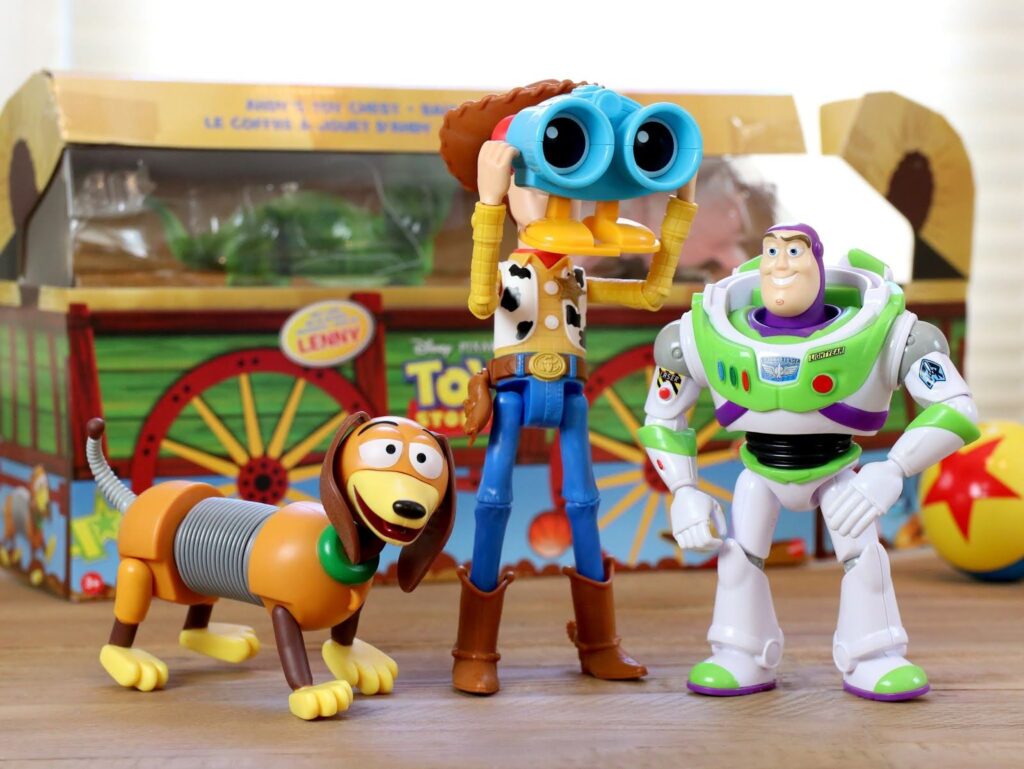
5. **Toy Story’s Triumph: A Box Office Revolution and IPO Success**The trajectory of Pixar dramatically shifted after the initial critical responses to “Toy Story.” Learning from New York critics that the film was likely to be a significant hit, and confirming Disney’s commitment to distribute it for the highly coveted 1995 Christmas season, Steve Jobs made the pivotal decision to give Pixar another chance. This moment marked a fundamental change in his commitment to the studio, moving beyond his earlier considerations of selling the company. He recognized the immense potential that lay within Pixar’s unique blend of technology and storytelling.
Following this renewed conviction, Jobs took on a far more active leadership role within Pixar, appointing himself CEO. This hands-on approach signaled a new era for the company, aligning its strategic direction more closely with its creative output. The release of “Toy Story” proved to be a monumental success, not just for Pixar but for the entire animation industry, ultimately grossing more than $373 million worldwide. It shattered preconceived notions about computer-animated films and established a new benchmark for family entertainment, demonstrating the commercial viability and artistic depth of the new medium.
The unprecedented success of “Toy Story” directly paved the way for Pixar’s initial public offering (IPO) on November 29, 1995. Trading as “PIXR” on NASDAQ, the IPO was nothing short of a sensation, surpassing Netscape’s as the biggest IPO of the year. The market’s excitement was immediate and intense; in its first half-hour of trading, Pixar stock soared from an initial price of $22 to an astonishing $45, causing trading to be temporarily halted due to an overwhelming number of unmatched buy orders. Shares continued to climb, reaching US$49 before closing the day at a robust $39, solidifying Pixar’s financial standing and marking its arrival as a major player in both entertainment and technology.
With its newfound financial stability and the overwhelming success of its first feature film, Pixar made a strategic decision to consolidate its creative efforts. On July 9, 1996, the company announced the closure of its television commercial unit, which at the time employed 18 individuals. This move was a clear indication of Pixar’s evolving priorities, signaling a definitive shift away from shorter advertising projects towards a dedicated focus on longer-form feature films and the burgeoning field of interactive entertainment. This commitment allowed the studio to pour all its resources and creative energy into developing more ambitious and intricate narratives, ensuring the quality and depth that would define its subsequent productions.

6. **The Pixar Braintrust: Cultivating a Filmmaker-Driven Creative Culture**Beyond its technological innovations and box office triumphs, one of Pixar’s most significant contributions to the animation industry has been the development and implementation of the “Pixar Braintrust.” This unique creative development process gradually evolved throughout the 1990s and 2000s, becoming the studio’s primary mechanism for ensuring the highest quality in its storytelling. It exemplifies a commitment to collaborative excellence and continuous refinement, fostering an environment where ideas are rigorously tested and improved.
The Braintrust operates as an internal peer review system where all of Pixar’s directors, writers, and lead storyboard artists regularly gather to examine each other’s projects. During these sessions, participants provide candid “notes”—the industry term for constructive criticism—on films currently in production. This open and honest feedback is not intended to micromanage, but rather to identify story weaknesses, character inconsistencies, or pacing issues, allowing creators to gain fresh perspectives on their work before it progresses too far.
At its core, the Braintrust operates under a philosophy of a “filmmaker-driven studio.” This stands in stark contrast to the traditional Hollywood model of an “executive-driven studio,” where directors often face micromanagement through “mandatory notes” from development executives who outrank the producers and creative teams. Pixar’s approach empowers its filmmakers, entrusting them with significant creative autonomy while simultaneously providing a robust support system designed to elevate the quality of their projects through collective intelligence.
According to Edwin Catmull, this distinctive creative process organically evolved from the close working relationship among key figures like John Lasseter, Andrew Stanton, Pete Docter, Lee Unkrich, and Joe Ranft during the production of “Toy Story.” The success of their collaborative dynamic on that groundbreaking film demonstrated the immense value of collective problem-solving and peer mentorship, leading to its formalization as a cornerstone of Pixar’s creative methodology. This collaborative spirit, born from a shared ambition to create the best possible stories, cemented the Braintrust as a defining characteristic of the studio’s unparalleled success.
As a direct result of the monumental success of “Toy Story” and the subsequent flourishing of this unique creative culture, Pixar undertook the construction of a brand-new studio campus in Emeryville. Designed by PWP Landscape Architecture, this state-of-the-art facility opened its doors in November 2000. The campus was not merely a new workplace; it was conceived as a physical embodiment of the Braintrust philosophy, designed to facilitate spontaneous interactions and foster a collaborative environment where artists, technicians, and storytellers could seamlessly converge and inspire one another, continuing the legacy of innovation and creative excellence.”
7. **Navigating a Contentious Alliance: The Pre-Acquisition Standoff with Disney (1999–2006)**Even after the resounding triumph of ‘Toy Story’ and a successful IPO, Pixar’s journey was far from a smooth ride, particularly concerning its relationship with Disney. A significant point of contention arose with the production of ‘Toy Story 2.’ Initially conceived by Disney as a direct-to-video release, and thus not falling under Pixar’s three-picture deal, the film was ultimately upgraded to a theatrical release during production. This strategic shift prompted Pixar to demand that ‘Toy Story 2’ be counted towards their existing agreement, a request Disney staunchly refused, highlighting an early fissure in their seemingly symbiotic partnership.
This dispute was symptomatic of deeper structural imbalances in their original arrangement. While Pixar bore the full burden of creation and production, Disney handled marketing and distribution. Profits and production costs were technically split equally, yet Disney exclusively retained all story, character, and crucial sequel rights, in addition to collecting a substantial 10%-15% distribution fee. This meant Pixar was creating immense value without proportional ownership, leading to growing dissatisfaction within the studio. Over ten months, the companies engaged in a series of failed negotiations on January 26, 2001, July 26, 2002, April 22, 2003, January 16, 2004, July 22, 2004, and January 14, 2005.
Pixar’s proposed new distribution deal sought to rebalance this power dynamic significantly. They demanded control over production, outright ownership of all resulting story, character, and sequel rights, and the autonomy to finance their own films, paying Disney only the 10%-15% distribution fee. Crucially, they also insisted on control over films already in production under the old agreement, specifically ‘The Incredibles’ (2004) and ‘Cars’ (2006). Disney found these terms unacceptable, leading to a complete breakdown in talks by 2004, primarily driven by the escalating disagreements between Steve Jobs and then-Disney chairman and CEO Michael Eisner.
In the wake of these stalled negotiations, Disney took the drastic step of forming Circle Seven Animation to develop sequels independently, while Jobs publicly declared Pixar was actively seeking alternative distribution partners. Despite engaging in discussions with major studios like Warner Bros., Sony Pictures, and 20th Century Fox, no concrete deals materialized, though a Warner Bros. spokesperson notably told CNN, “We would love to be in business with Pixar. They are a great company.” After Eisner’s departure from Disney in September 2005, negotiations eventually resumed. Jobs, ever the strategist, had already shifted Pixar’s release schedule from Disney’s traditional November timeframe to the more lucrative early summer months, which also provided a longer window for Christmas DVD sales and extended the existing Pixar-Disney contract, creating leverage for future discussions. A pending distribution deal for ‘Ratatouille’ in 2007 was a testament to the ongoing uncertainty, intended to ensure the film’s release if the acquisition failed, though its completion ultimately rendered this contingency moot.

8. **The Disney Acquisition: A New Era and the Preservation of Pixar’s Identity (2006)**After a period of intense and often fraught negotiations, Disney and Pixar finally reached a landmark agreement on January 24, 2006, with Disney agreeing to acquire Pixar for approximately $7.4 billion in an all-stock deal. This monumental transaction, completed on May 5, 2006, fundamentally reshaped the landscape of animated filmmaking and had profound implications for both companies. For Steve Jobs, who held 49.65% of Pixar’s total share interest, the deal transformed him into Disney’s largest individual shareholder with a 7% stake, valued at $3.9 billion, and secured him a prominent seat on Disney’s board of directors, a significant power shift within the entertainment giant.
The acquisition brought about a comprehensive restructuring of leadership, designed to integrate Pixar’s creative ethos while preserving its distinct identity. John Lasseter, who had been Executive Vice President at Pixar, ascended to Chief Creative Officer of both Pixar and Walt Disney Animation Studios, reporting directly to Disney President and CEO Bob Iger and consulting with Disney Director Roy E. Disney. He also took on the role of Principal Creative Adviser at Walt Disney Imagineering. Concurrently, Edwin Catmull retained his position as President of Pixar and assumed the presidency of Walt Disney Animation Studios, reporting to Iger and Dick Cook, then chairman of the Walt Disney Studios. Jobs’s previous roles as Pixar’s chairman and CEO were abolished, replaced by his influential position on the Disney board.
Bob Iger’s motivations for pursuing the acquisition were notably revealed by Lasseter after the deal closed. Iger recounted an epiphany during a parade at the opening of Hong Kong Disneyland in September 2005, where he observed a stark reality: none of the popular characters featured were ones Disney had created within the previous decade; all the newer, beloved figures were Pixar creations. This realization spurred Iger to commission a financial analysis, which confirmed that Disney had, in fact, been losing money on animation for ten years. Armed with this compelling data, he secured the board’s authorization to explore the possibility of acquiring Pixar.
Despite initial wariness from Lasseter and Catmull regarding a potential Disney takeover, Steve Jobs encouraged them to give Iger a chance, drawing from his own positive experience negotiating with Iger for rights to ABC shows for the iPod Classic. Iger successfully convinced them of his sincere belief that Disney needed to re-focus its animation efforts, assuring them that the acquisition was about revitalizing Disney’s creative heart, not absorbing Pixar. This trust-building was crucial in moving the deal forward.
To address analyst concerns about Pixar losing its distinctive culture within the larger Disney conglomerate, specific conditions were established as part of the acquisition. These stipulations ensured Pixar’s continued autonomy: its HR policies, including the absence of employment contracts, would remain intact. The Pixar name was guaranteed to endure, and the studio would maintain its Emeryville, California, location, complete with its iconic ‘Pixar’ sign. Furthermore, films produced post-merger would bear the joint ‘Disney•Pixar’ branding, commencing with ‘Cars.’ Jim Morris, the producer of ‘WALL-E’ (2008), was subsequently appointed General Manager of Pixar, overseeing the studio’s day-to-day operations and products, further solidifying the dual leadership structure aimed at preserving Pixar’s unique identity.
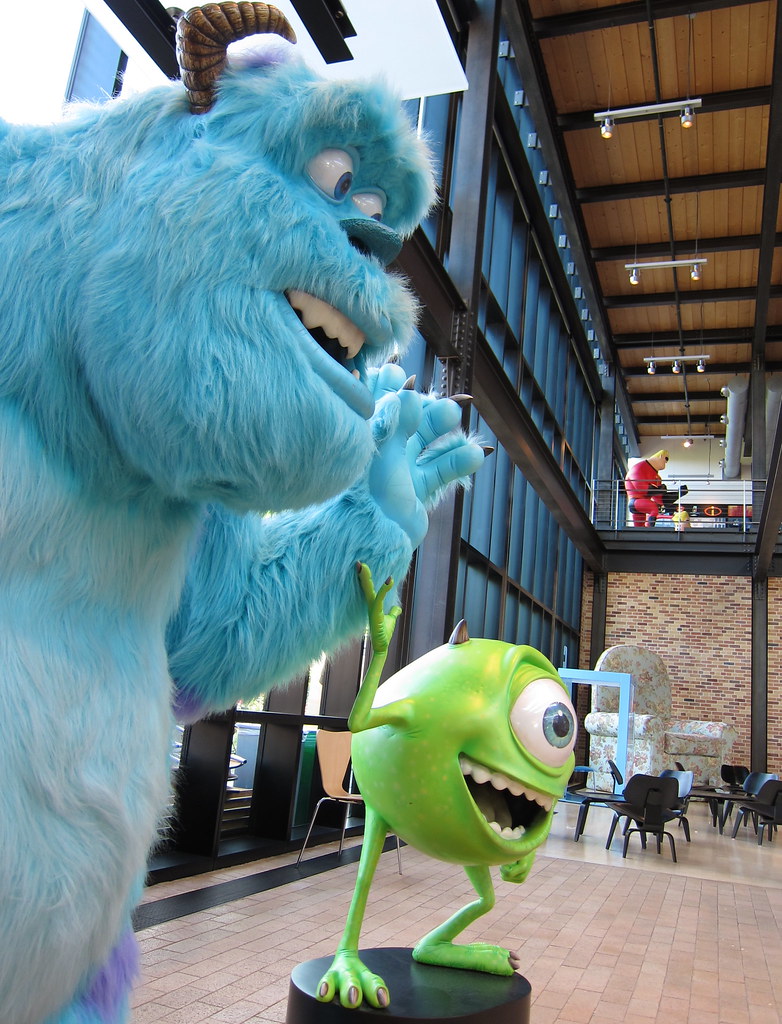
9. **Expansion, Leadership Transitions, and Lasseter’s Exit (2010–2018)**The years following the Disney acquisition saw Pixar continue to evolve, exploring new avenues for growth and navigating significant internal changes, particularly in its leadership structure. In April 2010, Pixar ventured into global expansion by opening Pixar Canada in downtown Vancouver, British Columbia. This roughly 2,000-square-meter studio was tasked with producing short films based on popular ‘Toy Story’ and ‘Cars’ characters, an initiative to leverage their established franchises in a new creative hub.
However, this international endeavor was relatively short-lived. In October 2013, Pixar Canada was closed, with the rationale being to refocus Pixar’s creative and production efforts back at its main headquarters in Emeryville. This consolidation reflected a strategic decision to centralize talent and resources, ensuring consistency in the studio’s output. Following this, in November 2014, Jim Morris, who had been General Manager, was promoted to President of Pixar, maintaining his reporting line to Edwin Catmull, who continued to serve as President of both Disney Animation and Pixar.
A more profound and impactful shift occurred in November 2017 when John Lasseter, a foundational figure and the creative visionary behind many of Pixar’s early successes, announced he was taking a six-month leave of absence. This decision followed his acknowledgement of what he termed “missteps” in his behavior with employees, as detailed in a memo to staff. Reports from ‘The Hollywood Reporter’ and ‘The Washington Post’ subsequently highlighted a history of alleged ual misconduct towards employees, casting a shadow over his influential career.
The situation culminated on June 8, 2018, with the announcement that Lasseter would be leaving Disney Animation and Pixar at the end of the year, though he would serve in a consulting role until then. This marked the end of an era for Pixar, as one of its guiding creative forces departed. To fill this crucial leadership vacuum, Pete Docter, a celebrated director within Pixar known for films like ‘Monsters, Inc.’ and ‘Inside Out,’ was announced as Lasseter’s replacement as Chief Creative Officer of Pixar on June 19, 2018, signaling a new chapter for the studio’s creative direction.
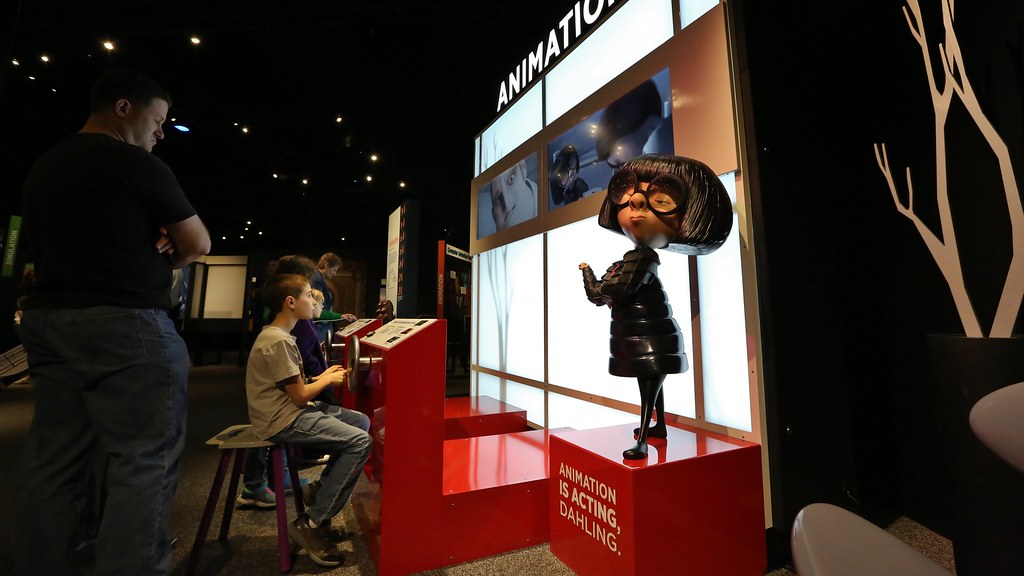
10. **Sustained Success and New Creative Horizons (2018–2019)**Despite significant leadership changes, Pixar demonstrated its enduring creative and commercial strength in 2018 and 2019, delivering blockbusters and exploring new content formats. June 15, 2018, saw the release of ‘Incredibles 2,’ which immediately broke records, achieving the widest opening weekend worldwide and domestically for an animated film. The superhero sequel went on to gross an impressive $1.2 billion worldwide, reaffirming Pixar’s ability to deliver highly anticipated and critically acclaimed sequels that captivate global audiences.
Further transitions within the executive team were announced later in the year. On October 23, 2018, Edwin Catmull, another pivotal co-founder and long-standing President, announced his retirement, remaining in an advisory role until July 2019. This marked the departure of yet another key architect of Pixar’s original vision. Following this, on January 18, 2019, Lee Unkrich, a celebrated director and editor who had been with Pixar for 25 years, also announced his departure, though he would eventually return to the studio some years later. These executive shifts represented a generational change in leadership, with new voices stepping into influential roles.
The box office dominance continued into 2019 with the release of ‘Toy Story 4’ on June 21. This film not only surpassed the widest worldwide opening weekend record previously set by ‘Incredibles 2’ but also went on to gross over $1 billion globally and earned the Academy Award for Best Animated Feature. This success underscored the continued power of Pixar’s cherished franchises and their ability to innovate within established narratives, proving that audiences were still eager to engage with their beloved characters on the big screen.
Beyond feature films, Pixar also began to strategically explore the burgeoning streaming landscape, anticipating future industry shifts. During the 2019 D23 Expo, the studio announced its next original film, ‘Soul,’ slated for release in 2020. Ahead of the launch of Disney+, Pixar debuted ‘SparkShorts,’ a series of experimental short films created by Pixar staff. This initiative provided a platform for emerging talent and offered diverse storytelling approaches, serving as a creative incubator and a way to populate the new streaming service with unique, Pixar-branded content, hinting at a broader strategy to embrace digital distribution.
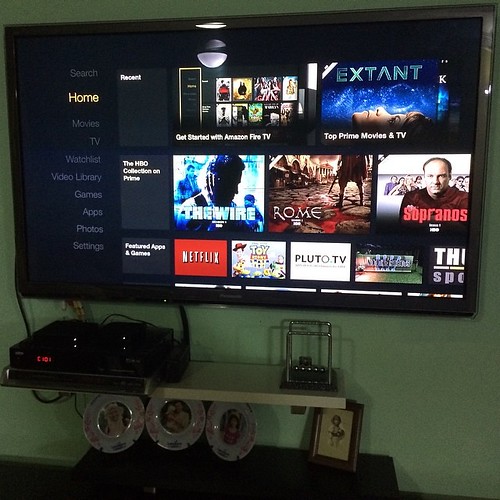
11. **Navigating the Streaming Shift, Financial Headwinds, and Theatrical Comeback (2020–Present)**The onset of the COVID-19 pandemic in 2020 profoundly impacted Pixar’s release strategy and marked a turbulent period for the studio. ‘Onward,’ released on March 6, 2020, unfortunately underperformed at the box office due to the pandemic’s immediate effects, prompting its swift release onto rental digital services on March 20, and subsequently Disney+ on April 3. This signaled an abrupt pivot to digital distribution, which would define several subsequent releases.
The pandemic’s prolonged impact led to further strategic shifts. ‘Soul,’ initially moved to November 2020, was ultimately released directly onto Disney+ on December 25, 2020, at no additional cost to subscribers. It later made history as the first animated streaming film to win the Academy Award for Best Animated Feature, demonstrating Pixar’s ability to maintain critical acclaim even under new distribution models. Following this, ‘Luca’ (June 2021) and ‘Turning Red’ (March 2022) were also released directly and freely on Disney+, further cementing a pattern of prioritizing streaming access.
These direct-to-streaming decisions, while beneficial for Disney+’s subscriber growth, were met with significant internal criticism. Several Pixar employees anonymously voiced their discontent, expressing frustration that their meticulously crafted films were being relegated to streaming releases rather than receiving the grand theatrical debuts they were designed for. This sentiment highlighted a growing tension between creative aspirations and corporate streaming strategies.
In June 2022, ‘Lightyear’ marked Pixar’s much-anticipated return to theaters, but it unfortunately became a significant box-office failure, with ‘Deadline Hollywood’ estimating a loss of $106 million for the studio after factoring in all expenses and revenues. This setback prompted further internal changes, including the promotion of Jonas Rivera to Executive VP of Film Production in September 2022, overseeing all film and streaming production. Disney CEO Bob Iger also publicly noted in December 2022 that the company would “rely more on the Pixar brand,” underscoring the pressure on the studio to deliver commercially successful theatrical hits.
The financial pressures led to significant workforce adjustments. In June 2023, Disney laid off 75 employees at Pixar, including ‘Lightyear’ director Angus MacLane and producer Galyn Susman. This coincided with the release of ‘Elemental’ that same month. Director Pete Docter acknowledged the challenge during the film’s opening weekend, stating that Pixar had inadvertently “trained audiences that these films will be available for you on Disney+.” Despite an opening below projections, ‘Elemental’ staged a remarkable box office comeback by early August 2023, crossing $400 million worldwide. Disney’s EVP of Theatrical Distribution Tony Chambers expressed satisfaction, noting, “After a disappointing opening weekend, we’re really pleased that audiences have discovered what a great movie it is.” Jim Morris later confirmed that ‘Elemental’ was expected to “do better than break even theatrically” and would be a “profitable film for the Disney company” considering streaming, theme park, and consumer product revenues. In a move to re-emphasize the theatrical experience, it was announced in December 2023 that ‘Soul,’ ‘Turning Red,’ and ‘Luca’ would receive theatrical releases in the United States in the first quarter of 2024.
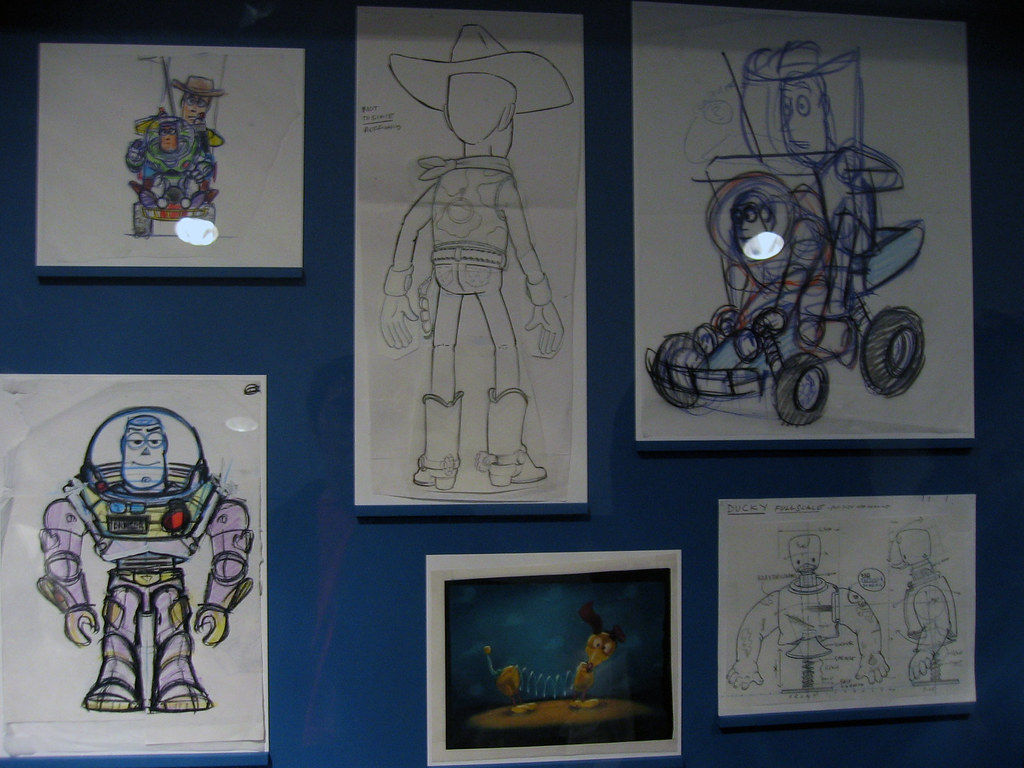
12. **A Renewed Theatrical Commitment and Pixar’s Enduring Vision**The ongoing restructuring at Pixar continued into 2024, reflecting a clear strategic pivot away from direct-to-streaming content and back towards its foundational strength in theatrical feature films. Reports in January 2024 of imminent layoffs, initially projected to reduce the workforce by 20 percent, were delayed but eventually materialized in May, impacting 175 employees, or approximately 14 percent of the studio’s workforce. These layoffs were directly attributed to the studio’s decision to lessen its reliance on streaming series and re-emphasize feature films destined primarily for cinematic exhibition, signaling a definitive commitment to the big-screen experience.
This renewed focus on theatrical releases received a monumental validation with the astonishing success of ‘Inside Out 2,’ which premiered on June 14, 2024. The film’s financial performance was nothing short of spectacular, achieving a domestic opening of $154 million, the third highest for an animated film, and the biggest global opening for an animated movie ever, with $294 million. ‘Inside Out 2’ shattered multiple box office records, becoming the first animated film to achieve a six-digit second opening weekend with $100 million, the fastest animated movie to reach $1 billion globally in just 17 days, and ultimately surpassed ‘Incredibles 2’ to become the highest-grossing Pixar film worldwide. This triumph unequivocally demonstrated that audiences remain eager for high-quality, emotionally resonant animated storytelling in cinemas.
The unparalleled success of ‘Inside Out 2’ served as a powerful testament to Pixar’s enduring creative prowess and the viability of the theatrical model when paired with compelling content. It underscored the studio’s ability to navigate complex industry shifts, from the initial embrace of streaming during a global crisis to a decisive return to its cinematic roots. This comeback not only solidified Pixar’s financial standing but also reaffirmed its core mission to deliver captivating narratives on the grandest stage, proving that the magic of a shared viewing experience remains irreplaceable.
Looking ahead, Pixar continues to meticulously craft its future slate, blending innovative new stories with beloved returning franchises. With films like ‘Elio’ (2025), ‘Hoppers’ (2026), ‘Toy Story 5’ (2026), ‘Gatto’ (2027), and ‘Incredibles 3’ (2028) on the horizon, the studio is poised to build upon its recent successes. This robust pipeline, anchored in both creative ambition and strategic market understanding, positions Pixar not just to endure but to continue leading the animation industry, defining new benchmarks for storytelling and technological artistry in a perpetually evolving entertainment landscape.



